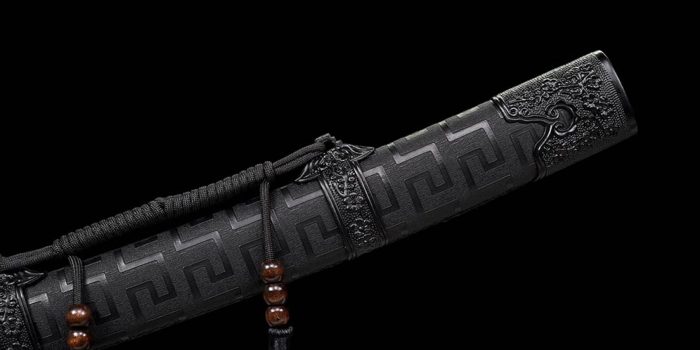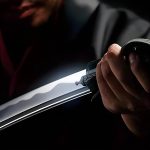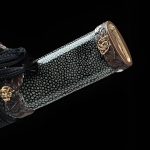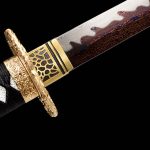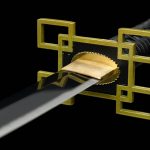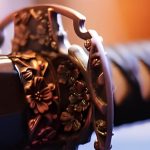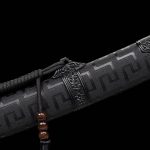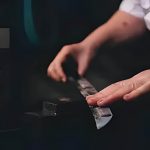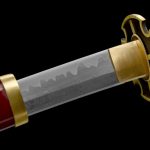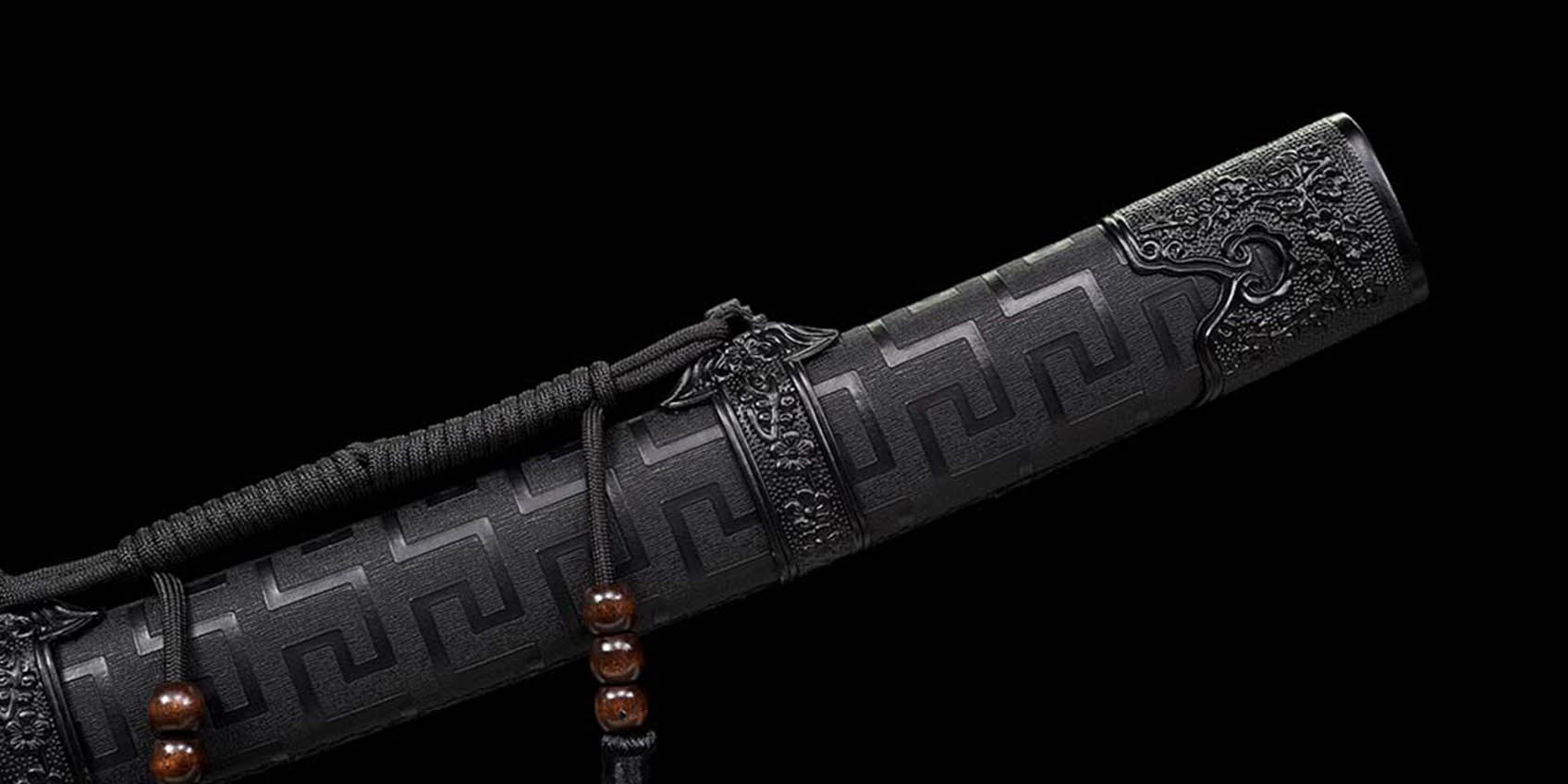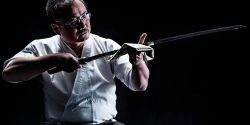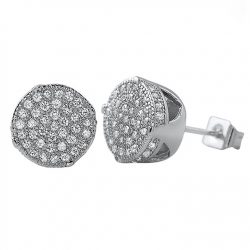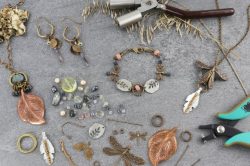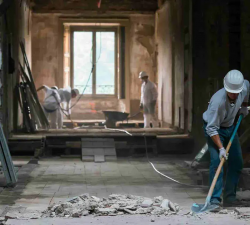Scabbard Artistry & Cultural Fusion in Custom Swords
How much is a samurai sword?
When friends inquire, ‘What budget do I need to buy my ideal samurai sword?’ it’s important to note that beyond the commonly priced options, there are custom models where every aspect of the blade can be tailored to personal preferences. This customization allows for a truly unique and personalized piece. Next, let’s delve into the story behind the saya (scabbard) of the samurai sword.
The Legacy of the Samurai Sword
The samurai sword, an iconic symbol of Japanese culture, is renowned not just for its formidable blade but also for its rich cultural significance and intricate artistry. This article delves into the saya (scabbard) of the samurai sword and its associated fittings, providing insights into this sophisticated and captivating system.
Koshirae and Shirasaya
Koshirae: Koshirae refers to the complete assembly of the katana, including the blade, handle, saya, and other fittings. Various forms of koshirae exist, each representing different assembly methods. It serves as both a protective cover and a testament to the sword’s artistic value. Shirasaya: Shirasaya is a plain wooden scabbard typically used for storing the sword when it is not in use. Made primarily of magnolia wood, shirasaya features a simple design that protects the blade from environmental elements.
Materials of Samurai Sword Saya
The saya and handle are usually crafted from wood, with magnolia being a common choice. However, some fittings are entirely made of metals such as iron, yamagane (crude copper), suaka (reddish pure copper), shakudou (black-purple copper-gold alloy), and shibuichi (a copper-silver alloy with over 25% silver content, giving it a grayish-green appearance). These metals provide various textures and colors, enhancing the saya’s collectible value.
Classification of Koshirae
Based on the sword’s form, koshirae can be classified into tachi koshirae and uchigatana koshirae. Tachi Koshirae: Originating from use by cavalry, tachi koshirae features two ‘ashi-kanamono’ (fittings for hanging) on the saya, allowing the sword to be worn edge-down from the waist. After the Edo period, historical changes and laws made tachi koshirae less common. Uchigatana Koshirae: More prevalent than tachi koshirae, uchigatana koshirae involves wearing the katana edge-up, inserted into the waistband for easier drawing during ground combat. Ornate Tachi Koshirae Ornate Tachi Koshirae: This type of koshirae, originating in the Heian period, closely resembles Tang dynasty swords from China. Initially used for significant events like imperial court ceremonies, wearing these swords adhered to strict rank and attire regulations.
Key Features of Ornate Tachi Koshirae:
1. Yamagata-Kan: Large fittings on the ‘ashi-kanamono’ used for attaching two ‘ashi-kawa’ (straps).2. Tang Tsuba: The sword guard design resembles Tang dynasty sword guards, known in Japan as ‘Tang Tsuba.’
Collectible Value of Tsuba
The tsuba (guard) is a crucial fitting of the samurai sword, noted for its intricate design and craftsmanship. Renowned auction houses like Sotheby’s often hold tsuba-specific auctions, where an unassuming iron tsuba can fetch tens of thousands of dollars. Some collectors own thousands of tsuba, underscoring their high collectible value.
Conclusion
The exterior and fittings of the samurai sword are not just protective tools but are also art pieces that showcase Japanese culture and craftsmanship. Understanding these exquisite details allows for a deeper appreciation of the samurai sword’s beauty and the history and culture behind it. Whether it is koshirae, shirasaya, or tsuba, each part is worthy of in-depth study and admiration. This brief introduction aims to inspire further interest in the saya of the samurai sword and open a window to its fascinating world.
Modern Cultural Evolution and Personalization
With the evolution of modern culture and the rise of personalization, the saya of the samurai sword has seen a diversification in design options. From color to material, from traditional wood to modern metals, the saya’s design has become increasingly varied. This change meets contemporary aesthetic and functional demands, offering collectors more possibilities for personalization. Whether pursuing traditional aesthetics or modern styles, enthusiasts can customize their saya, transforming each sword into a unique artwork. This personalized customization service enriches the samurai sword collection, fully reflecting each collector’s unique taste and aesthetic sensibility.
Our shop offers a wide range of customized services
https://www.coolkatana.com/products/custom-sword
At some events, fans demonstrate their swordsmanship skills, paying tribute to anime’s legendary battles. Conventions even hold swordsmanship competitions, letting enthusiasts showcase their passion and creativity with these iconic weapons. Certain anime weapons hold special significance for fans, influencing anime swordsmanship and sparking interest in related merchandise. Celebrations at various anime events further boost their popularity. These weapons symbolize strength and courage, leaving a lasting mark on the anime world.
